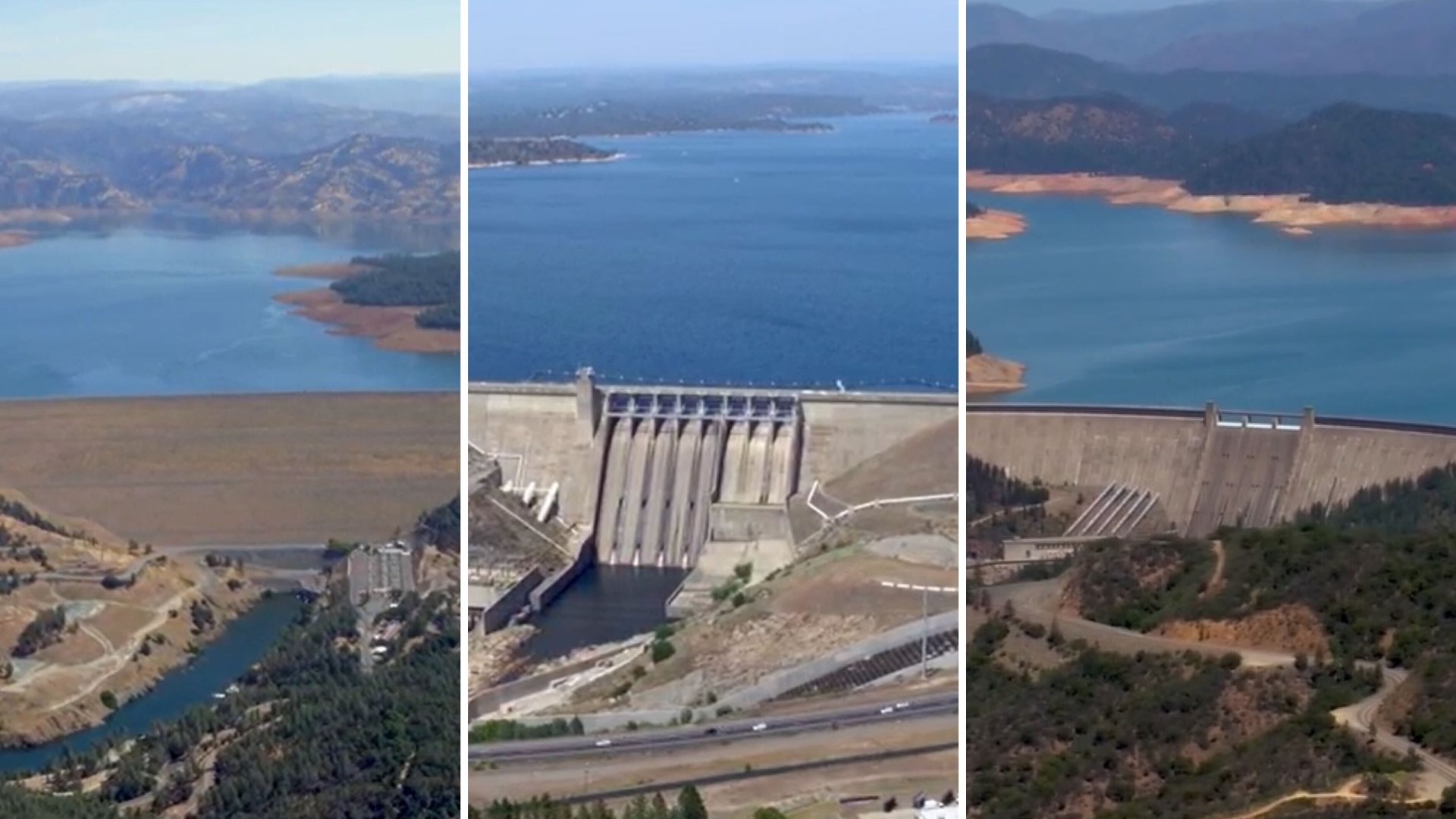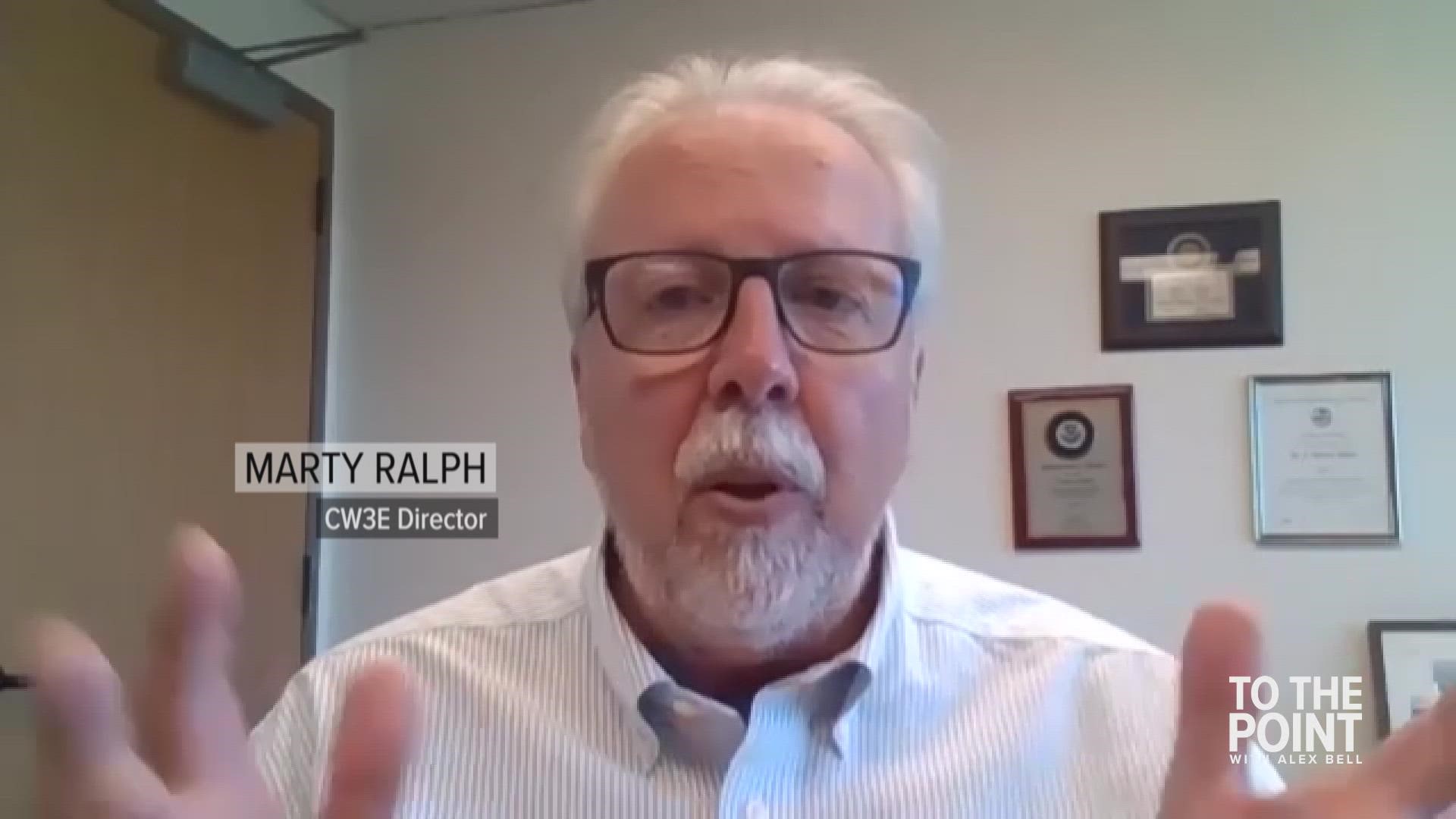The new ways California is working to change where and how we store water
Climate trend forecasts are showing weather volatility ahead with less snow and more rain falling in California. This has the state rethinking how we store water.

Article Read what is being done to store water
California is a state of extremes with two distinct periods of wet and dry seasons. During the wet season, water must be stored to prepare for months without any precipitation.
With a changing climate, water storage is becoming one of the biggest challenges facing California. The system set up throughout the state is a complex myriad of above and below-ground storage, but what worked decades ago is no longer serving our water needs.
This has many water managers rethinking how, when, and where we can store water. In some cases, it's developing new oversight and in others, it's adjusting long-standing rules to try and keep up with water needs.
Two programs come to the forefront of this challenge:
These address the growing water issue through better forecasting and innovative technology, moving us forward to try to help secure our water future.
Marty Ralph, director of the Center for Western Weather and Water Extremes (CW3E) is working with researchers and scientists in San Diego to better understand the biggest storms to hit the West Coast — called atmospheric rivers. These are large rivers in the sky that can deliver beneficial rain or devastating floods.
The presence of several good atmospheric rivers in a season can mean water to store in the dry season. When the state experiences years of few atmospheric rivers drought will result.
Ralph and his team are working to better forecast atmospheric rivers so water managers know when to store and when to release water. This is a fundamental piece of information needed for reservoir operations and flood protection.
Joe Forbis with the U.S. Army Corps of Engineers (USACE) says some of the dams in the state can't be to the top because there's not enough time to get water out before more come in from the storms.
Older forecasting methodology left many water agencies with limited information forcing them to release water to prevent flooding.
With improved forecasts from the CW3E, partners like the USACE can now add new flexibility to rules that dictate when to let water out and when to keep it in.
Forbis says a better understanding of the atmosphere and the climate help to make better use of the current infrastructure in the state.
This opens the door for programs Projects like FIRO.
Tested on Lake Mendocino during the 2019 and 2020 water years, water storage increased by 19% by integrating improved weather forecasting.
This is only part of the water puzzle though because even with better surface water management, the state needs more. That's when we turn to what’s called groundwater. A natural underground system with the capacity to hold nearly 20 times the amount of our surface water system.
Steven Springhorn with the California Department of Water Resources (DWR) says there are about 500 plus underground water basins beneath our feet in our state. He says in drought years groundwater can supply up to 60% of our water needs. But it’s been largely unchecked.
That’s why the state is now requiring water basin managers to submit sustainability plans that meet standards under SGMA.
Up until now, knowing where and how to store this type of water has been somewhat limited. But a new program supported by DWR called Aerial Electromagnetic Survey is helping fill in the gaps by using electronic equipment attached to a helicopter to scan below the surface. Kind of like an MRI of the area.
Project manager Katherine Dlubec says this underground survey helps to determine the type of materials below the surface. Certain course materials like sands and gravels allow water to move through but finer grains like silt and clay tend to inhibit water flow. She says knowing the type of materials below the surface makes a big difference in where we can store water.
This should prove particularly helpful for areas like the Central Valley where data from 1998-2018 show over-pumping dropping groundwater levels by over two and a half feet a year.
But it’s much better news for the nearly two million people relying on water from the American River Basin where groundwater levels are increasing.
This is due in part to projects like the Regional Water Authority’s (RWA) Water Bank, an underground natural reservoir two times the size of Folsom Lake.
A climate resiliency project addressing the changing cycle of weather by storing water in wet periods and only tapping into it during dry periods.
RWA Legislative and Regulatory Affairs Manager, Ryan Ojakian, says climate change is their most significant challenge to meet their mission that when the two million people go to their tap, water comes out.
Storing water underground not only adds more flexibility but a bigger water portfolio throughout the entire state. Ojakian says that's our moonshot in the state of California to address the weather whiplash.
When asked about just building more dams, Joe Forbis says it’s more cost-effective to make the best use of our existing infrastructure and improve our groundwater.




















